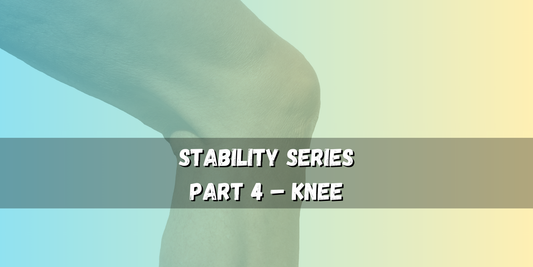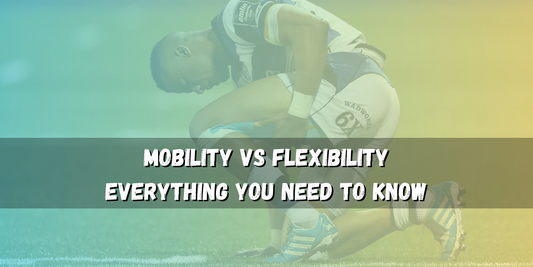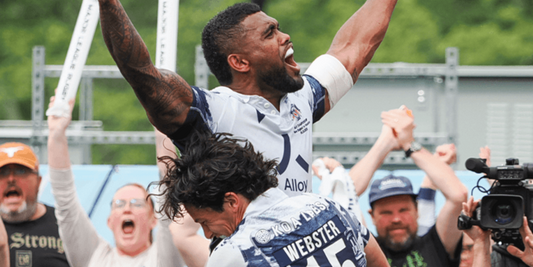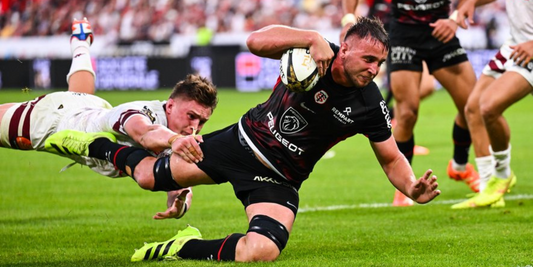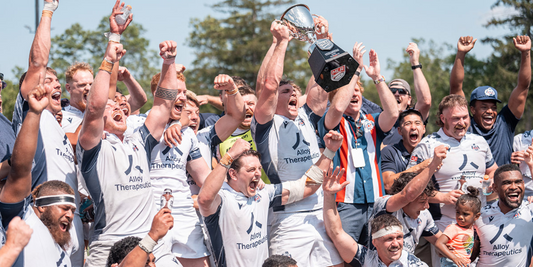If you want to stay safe in contact, absorb collisions, and reduce your risk of concussion, you need to train your neck like every other major muscle group.
This article breaks down how to build a strong, stable, and resilient neck specifically for rugby—with exercises that protect your spine, reduce injury risk, and help you dominate physical exchanges on the field.
You’ll also get access to a downloadable 5-day neck training routine with cues, progressions, and rugby-specific guidance you can plug straight into your training plan.
Here’s how the series looks like:
- Part 1: How to Build a Strong Core for Rugby
- Part 2: How to Build Strong Legs for Rugby
- Part 3: How to Build Strong Shoulders for Rugby
- Part 4: How to Build a Strong Back for Rugby
- Part 5: How to Build a Strong Neck for Rugby
- Part 6: How to Build Strong Wrists and Grip for Rugby
- Part 7: How to Build Strength for Rugby
- Part 8: How to Build Power for Rugby
- Part 9: How to Build Speed for Rugby
Let’s move to your next foundation: your neck.
WHY NECK STRENGTH MATTERS IN RUGBY
Your neck plays a critical role in protecting the brain, spine, and shoulders during contact. It absorbs force, stabilizes your head position, and acts as your last line of defense against concussions, whiplash, and nerve-related injuries.
A strong neck helps you:
- Reduce concussion and whiplash risk
- Maintain neutral posture during collisions
- Absorb impacts safely in scrums, tackles, and rucks
- Prevent stingers, nerve compression, and neck sprains
- Stay confident and composed in high-contact situations
Neglecting your neck is one of the most common mistakes in rugby S&C programs—yet it’s one of the most important areas to train.
UNDERSTANDING NECK FUNCTION FOR RUGBY
The neck is a complex area made up of muscles, joints, nerves, and connective tissue—all designed to stabilize and protect the cervical spine.
To build a stronger rugby neck, you must address:
1. Cervical Flexors and Extensors
These muscles move your head forward and back. They’re critical in decelerating and resisting head movement during contact.
2. Lateral Flexors
Control side-to-side motion of the head. These protect during sideways tackles and rapid directional changes.
3. Rotators
Allow for turning and rotation of the head. In rugby, these muscles help maintain awareness and protect against rotational trauma.
4. Postural Control & Stability
Includes deep neck stabilizers and upper back support. Proper posture = proper force distribution during impact.
RUGBY-SPECIFIC NECK DEMANDS
Neck strength isn’t just for front-row players—every position needs it:
- Tacklers need to brace their head on contact
- Ball carriers need to resist head snaps during hits
- Scrum players need to absorb constant pressure
- All players need to protect the brain and spine
Neck training improves confidence in contact and helps prevent both acute and cumulative trauma.
THE TRAINING PROGRESSION
Train the neck the same way you train any muscle group: progressive overload, movement control, and smart programming.
1. Isometric Training
Start by building strength without movement:
- Neck bridges (front/side/back)
- Manual resistance holds (partner or banded)
- Stability holds with resistance ball
2. Controlled Dynamic Movements
Train through full ranges with light resistance:
- Banded neck flexion/extension
- Side-to-side neck bends
- Rotational holds or pulses
3. Postural Integration
Add neck control into full-body movements:
- Farmer carries with head alignment
- Plank or bear crawl holds with neutral neck
- Tackle or scrum simulations with posture focus
Training should move from isometric → controlled motion → integrated posture.
KEY TAKEAWAY: STRONG NECK = SAFE COLLISIONS
You can’t avoid contact in rugby—but you can train to handle it better. A strong neck is your natural helmet. It reduces the risk of brain and spinal injuries and gives you the confidence to attack every collision head-on.
Protect yourself. Build your neck.
GET YOUR FREE NECK TRAINING ROUTINE
Want a simple, effective neck routine you can use in warm-ups, cool-downs, or recovery sessions? Enter your email below to get your free copy. We’ll send it straight to your inbox.
This free PDF includes 5 rugby-specific neck training blocks—each featuring 2 to 3 exercises built to:
- Improve neck strength and stability
- Reduce concussion and whiplash risk
- Build confidence in contact
Download it now and start training like a rugby athlete.
If you found this article helpful, don’t forget to:
- Like and share this post with your teammates and fellow rugby fans
- Bookmark the blog to stay updated on the next rounds
- Follow @gopeakrugby on X and Facebook and subscribe to our Youtube Channel for more rugby analysis, match recaps, and insights










